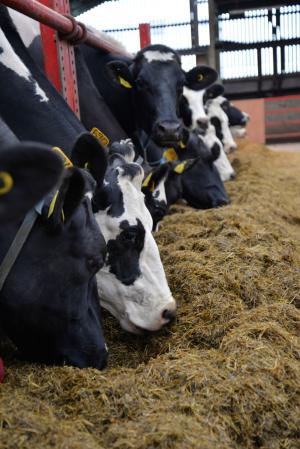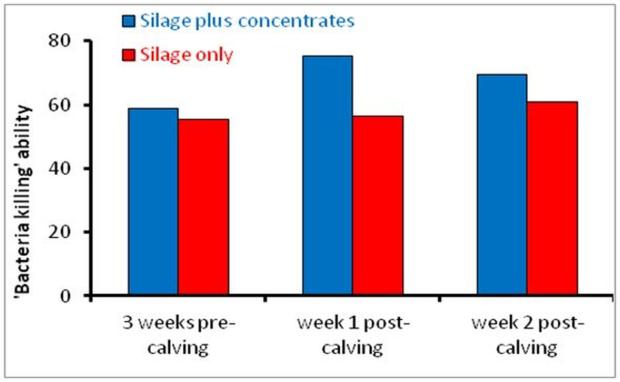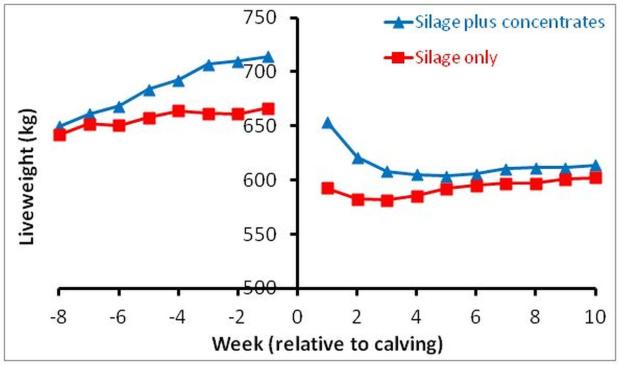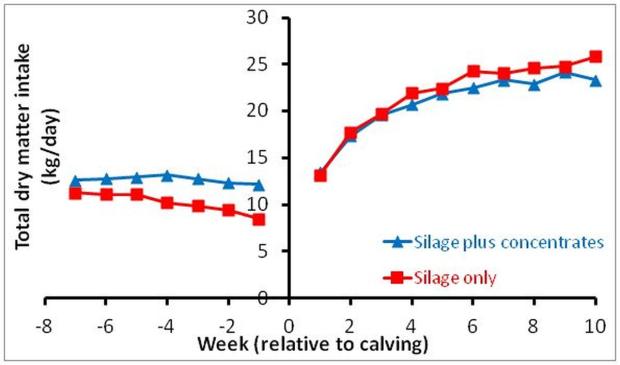Concentrate feeding in the dry period has no effect on performance and health in next lactation
Date published:
A large number of changes take place during this time, including a reduction in food intake, changes in hormone levels, social changes (joining a new group and adopting to a new routine), and changes in diet type and quality.

These changes combine to make the transition period a time of ‘stress’ for the cow, and as a consequence, the cow’s immune system becomes suppressed making her more susceptible to infections. Diseases which occur during this time can have a long-term impact on cow performance during the following lactation.


Research programme
This study involved 51 Holstein-Friesian dairy cows. Cows were managed on one of two feeding strategies during the dry period:
- Silage only: cows on this treatment were offered grass silage (plus a dry-cow mineral/vitamin mix) throughout the dry period.
- Silage plus concentrates: cows on this treatment were offered grass silage (plus a dry-cow mineral vitamin mix), plus approximately 3 kg concentrate per cow per day throughout the dry period.

Results
Cows on the Silage only treatment had a lower dry matter intake during the dry period than those offered concentrates, and also experienced a greater reduction in intake during the last few weeks pre-calving (Figure 1). In addition, the energy intakes of cows on the Silage only diet was insufficient to meet their energy requirements during the two weeks pre calving. As a result of their higher intakes, cows on the Silage plus concentrate treatment gained more liveweight (Figure 2) and body condition during the dry period than those on the Silage only treatment. However, neither calving difficulty nor calf birth weight was affected by dry cow management.
Following calving, feed intakes were unaffected by concentrate feeding during the dry period. However, cows offered concentrates during the dry period lost more liveweight and body condition than those on the Silage only treatment. The effects of concentrate supplementation during the dry period on cow performance during the first 10 weeks of lactation are summarized in Table 1. While neither milk yield nor milk protein content was affected by concentrate feeding during the dry period, cows offered concentrates tended to produce milk with a higher fat content. This is likely to reflect the increased mobilization of body fat with cows on this treatment.

Conclusions
Cows offered concentrates during the dry period gained more liveweight before calving but lost more after calving, than those offered a silage only diet. However, neither milk yield nor milk solids yield was affected by concentrate feeding during the dry period. While cows offered concentrates had an improved immune defence against bacteria during the first week of lactation, this did not result in a reduced incidence of disease during this time. If moderate to good quality silage is offered during the dry period, there is no economic respsonse to concentrate feeding at this time.
*Mark Little is a second year PhD student based at AFBI-Hillsborough
Notes to editors:
AFBI carries out high quality technology research and development, statutory, analytical, and diagnostic testing functions for DARD and other Government departments, public bodies and commercial companies.AFBI's Vision is “Scientific excellence in Northern Ireland … serving the world”.All media enquiries to AFBI Press Office